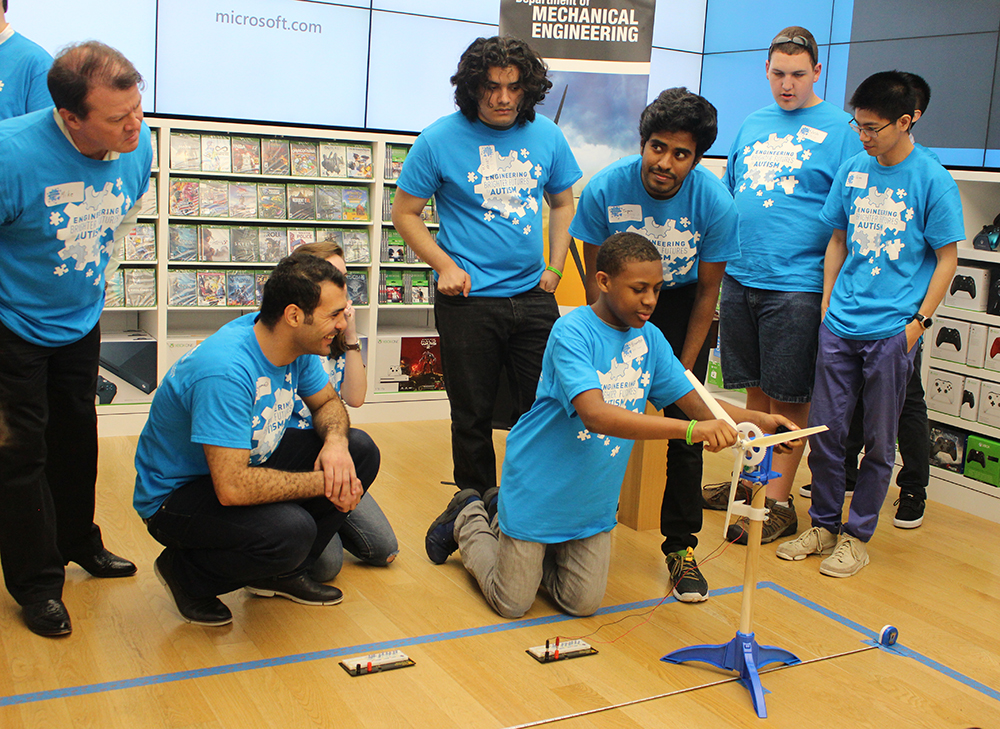Tips for Understanding Those with Autism
 At the 2017 Engineering Brighter Futures for Autism event, UTD faculty and students teamed up with participants to build miniature wind turbines.
At the 2017 Engineering Brighter Futures for Autism event, UTD faculty and students teamed up with participants to build miniature wind turbines.
April is Autism Awareness Month, and a UT Dallas speech-language pathologist said many people don’t understand the neurological and developmental disorder.
Rachel Wehner works at the Callier Center for Communication Disorders with children who have been diagnosed on the autism spectrum.
“It’s called the autism spectrum because each person is different, with things they do well and things that they are working on — just like the rest of us,” Wehner said.
Autism, or autism spectrum disorder, refers to a range of conditions characterized by challenges with social skills, repetitive behaviors, speech and nonverbal communication, as well as by unique strengths and differences. The Centers for Disease Control and Prevention estimates autism’s prevalence as 1 in 68 children in the U.S.
Wehner said there are a number of things that people without autism can do to create positive interactions with those who are on the spectrum, although she said each situation varies.
- Speak in shorter, simpler sentences, especially in unfamiliar environments.
- When speaking, some on the spectrum may need more processing time, so be patient.
- If ideas are not immediately understood, rephrase your wording or pair it with a picture or gesture.
- If a person on the spectrum invades your personal space, they may not understand such boundaries. Just tell the person that he or she is too close.
- Sometimes those on the autism spectrum will be very literal, and have difficulty with abstract language. You may have to explain with different words.
- Older teens and adults may not understand the humor you are using, taking things very seriously and personally. You may have to explain your joke.
- If you notice someone getting upset, give them space and use a calming voice.
–Phil Roth



